#eastern front (WWI)
Explore tagged Tumblr posts
Text

Honvéd in a German-made GM15 mask.
61 notes
·
View notes
Text

Bolshevik reds with canon. 1917
#russian revolution#russian civil war#bolsheviks#1917#1910s#wwi era#wwi#photography#cannon#tumbler#war history#the great war#ww1#eastern europe#eastern front#first world war#world war 1#russia#world war one#Europe#history
56 notes
·
View notes
Text
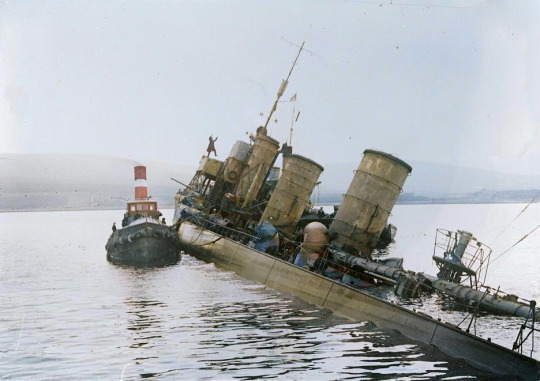
With the Armistice in negotiation, the conditions of the agreement demanded the entire German U-Boat fleet be surrendered and confiscated near the Orkney Islands. German admiral Ludwig von Reuter, who refused to let his ships become the spoils of war, ordered his crews to open seacocks, torpedo tubes and portholes on the ships to flood them, hoist their flags of the Imperial German Navy, and sink them off the coast of Scotland. It was the single greatest loss of warships in history, and the nine German sailors killed that day were the last to die during World War One. The final peace treaty was signed just a week later.
#ships#Navy#world war one#historical photos#the great war#world war 1#wwi#the first world war#1917#canadian history#history#german soldier#german army#war in europe#artillery#eastern front#ww1#world war 1 stories
81 notes
·
View notes
Text
Book Review: The Witch's Lens by Luanne G. Smith
A witch finds herself recruited to WWI’s eastern front to fight a scourge of zombies. Summary:With her husband off fighting at World War I’s eastern front, Petra Kurková embraces her fleeting freedom, roaming the city at night with her camera. A born witch, she’s discovered that she can capture the souls of the dead on film. Her supernatural skills don’t go unnoticed by the enigmatic Josef…
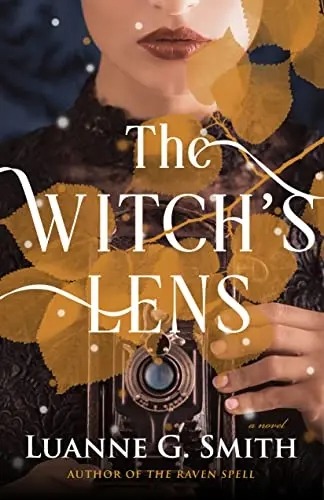
View On WordPress
#book#book review#eastern front#fantasy#ghosts#luanne g. smith#photography#Review#the witch&039;s lens#witch#witches#WWI#zombies
0 notes
Text
Wrapped up the second of the three books:
This one, as the title indicates, covers the experience of WWI between 1914-7, as fought between Hohenzollerns, Romanovs, and Habsburgs. It was and is a key book, the main academic history of the war in its writings, and bluntly indicated that Russia did not, in fact, lose WWI because it had no bullets or artillery shells against an army that did. It lost WWI because its political and military leadership were staggeringly incompetent and devoured millions of lives in inducing a major crisis that contributed to both the collapse of the state and its transformation into the USSR.....and to the first point in time when people outside the Russian Empire were forced to deal with the existence of Ukrainians, Belarusians, Finns, and Balts as actual realities.
I reread this one every so often for the same reasons and in the same spirits that I look at books on the Army of Tennessee, as reminders that authority never deserves respect because of its existence and that people will happily charge headlong into self-destruction thinking they save themselves when they should know better and will double down on failure in the process.
The book does, however, encounter a very hard stop at its end, where it only speaks of 'Russians' and 'Bolsheviks', neglecting the February Revolution altogether and treating Bolshevism with hindsight as the tail wagging the dog. The reality of the end of the war was that it was a mini-1848 and springtime of nations who sought to emerge from the greatcoat of Russian brutality and were forcibly denied this and given a pale ghost of it in a drab Soviet overcoat with a hammer and sickle.
Of course this was also written by a right-wing British historian in the Cold War, so it's not surprising that a Briton would neglect the existence of nationalities in Russia and wouldn't have cared to look at something truer to what was happening in 1917 and later.
8/10.
0 notes
Text

February 21, 2019
Tannenberg (2019)
#tannenberg#vg#vgs#screenshot#my screens#video game photography#battle of tannenberg#world war one#ww1#wwi#eastern front#pc gaming#video games#war aesthetic#multiplayer
0 notes
Text
The thing I think isn't talked about enough in all these conversations about "AI art" is how, even if you work out all the kinks, even if you get it to the point that it works perfectly according to the most lofty goals set, even if all that came true... AI will still disappoint when set next to even just a moderately skilled human artist. Not because of any technical flaws with the product, but because of its fundamental limitations as a tool.
AI, as we understand it right now, without all the grandstanding and doomsday predictions and near-mythological qualities we ascribe to it, works on binary. Down to its core, stripped to its studs, it works on binary code, and you see that reflected in the design. Every choice it makes, every result it produces, is a result of a million, billion "yes or no" questions asked of it that chain together into a coherent response. Endless amounts of "TRUE or FALSE" results spat out when data is fed into it, that string together to form a conversation, or an essay, or a painting, or a comic. At least, when trained on enough data to weigh the odds in favor of what the creators want it to do.
If you ask ChatGPT to tell you something about romance, it filters its endless data banks for what that training data it was given matches your request and what results in those tests were rewarded by its programmers and which were discouraged and based on all that, it begins making TRUE or FALSE choices with the odds weighed by that data. That's how all AI we currently have fundamentally work, and that, in and of itself, is not a bad thing. It's a tool, and tools are hard pressed to be evil. What it is, however, is vastly inferior to the process of a human writer for one simple fact: when asked a question, we have more options than to answer it TRUE or FALSE.
If you ask a human writer to tell you about romance, they too will draw upon all the memories they have stored away of what they know about romance and base an answer off of that. But they will also draw up all the knowledge they have on astronomy, to compare the feeling it creates inside to that of hydrogen fusing, and that of medicine, because it burns so bright inside that it feels like your rib cage feels like it should be alight from the inside until it looks like an inverted x-ray image. A human writer will visualize the way love feels and draw connections an AI couldn't fathom, because it was never trained to do so. And more than that, if a human writer tells you about romance, they won't tell you just about romance.
They will tell you about how romance happens.
They will tell you about what romance between a young Polish woman and a young Polish man living in what would one day be the powiat of Bieszczadzki on the border with Ukraine, but for now are just the Bieszczadzki mountains, in the spring of 1914 would have looked like. And they will tell you about how it looked like all the months afterwards as the young man is drafted into the army and their home is ravaged by WWI as the Bieszczadzki mountains become one of the most bitterly contested regions in the Eastern Front during the war. They will tell you about how romance, how the love blooming from it, cannot fix the damage wrought by senseless battles fought by powers so much greater than the two of them, but how it carries them through the war nonetheless.
And what's more, they will know enough about the history of Poland to parallel the growing love between these two young people with the growing, not-yet-formed modern state of Poland that will once again rise from the ashes of the war after having previously been partitioned by greater powers into non-existence.
A human writer will not only have the knowledge to do that, they will have the skills and manner of thinking necessary to form the thoughts that will lead to such a story and make it into something incredible. An AI, no matter how well you train it, no matter how good you make it at emulating a writer's style, will not be able to form the same thought process. Not because it is flawed, but because it simply isn't built for that.
An AI cannot experience nationalism or patriotism for a country, an AI cannot reason out how people might have lived in the absence of credible historic evidence when it runs up against a gap in its data, an AI will not understand the link between fragile, young love blooming in adversity and a country struggling to be reborn in spite of the greater nations around it that wish it would remain dead. It cannot do this, because it isn't based in "TRUE or FALSE" questions. It's based in the painfully human experience of complicated emotions, difficult thoughts, and yes, even deeply flawed ways of looking at the world that nonetheless are beautiful exactly for having those flaws.
An AI, at its core, with where the technology is right now, is a machine of averages. Even if we polish it to peak performance, that will not change. At peak performance, it will still give you an average of all the possible answers it could give, it will be technically flawless, and it will never be anything even close to a fraction of the lightning in a bottle that a writer with categorically shit technique can capture if their heart and mind are put into it.
And let's be honest here and step a foot outside of the bubble of speculation, just for a bit: AI will never, ever, give you an answer or story that pushes boundaries or makes you think like even the most technically incompetent but passionate authors are able to.
Because in order to push boundaries, in order to deliver a message, you have to be willing to make people uncomfortable. You have to be willing to be messy and raw to the point that your story bleeds. And even if we polished AI to perfection, even if, by some miracle of a completely new and fresh coding base, it could do all those things... the humans pulling the strings of the machine would never allow it to do so. Because if their machine produces stories that push boundaries, that have things to say, that make people uncomfortable, it's not going to be profitable. It's not going to be advertiser-friendly. It's not going to please the stock market. And let's be honest here, in the end, that's what matters to those people.
AI cannot write the stories that people want it to, that they truly want it to, because in the end, the stories we want to hear are not the stories it can tell. The stories we want to hear are, in the end, painfully human, in all the best and worst ways possible. And if you want a human story, if you want to have something like that lightning in a bottle, AI can never be more than a tool in making them instead of the maker itself. A potentially useful and innovative tool, but nothing more than that.
Because if you want human stories, no one but a human will be able to write them. And no one but a human will be able to read them and understand what's being said.
209 notes
·
View notes
Note
🔥WWI
Hmmm.....I don't think any of my academic opinions are all that unpopular.
But here's one: It is understandable that the general image of the war in our collective cultural Zeitgeist comes from the Western Front, since much of it is coming from the memoirs/art/literature of people who were fighting on that front.
However, I think it is a pity that the experience on the Eastern front (beyond the fall of the Romanovs) and the Italian front is virtually non-existent in representations of the war.
34 notes
·
View notes
Text
German painter of the Red Army- Herbert KNOTEL (1893-1963)
I really appreciate this painter's watercolor style. I can tell he painted these soldiers live, which is an incredible feat. I will annotate which soldiers are portrayed in the painting the best I could, from left to right, in chronological order. Some of his works come from this source, with an introduction-
Herbert was born in 1893 in Berlin, then the capital of old Hohenzollern Prussia ... he was the son of renowned uniformologist and military historian Richard Knötel (1857-1914).
Herbert found himself as an officer in the Prussian Army and, assigned to Hindenburg’s 1st Army was wounded at Tannenburg during WWI. He finished the war as a Hauptmann in a horse cavalry unit on the Eastern Front.



1921 political commissar of the Red Army infantry unit 1924 Winter Cavalry 1932 Engineer



1935-1938 Infantry Lieutenant 1936-1943 Infantry First Class 1933 Infantry Private First Class



1938-1943 Staff Sergeant, Air Force Ground Service Department 1938-1943 Army Lieutenant General 1938-1943 Artillery Colonel



1941-1942 Infantryman in civilian uniform 1942, winter clothing for severe cold weather 1942 Winter Infantry



1942 Paratrooper 1943-1945 Winter Infantry 1943-1945 Tank Corps Sergeant



1943-1945 Second Lieutenant, Air Force 1944 Winter Cavalry 1945 Infantry



1945, a first class engineer wearing swimming uniform July 1945, female soldier of the Soviet Army on Kurfürstendamm Boulevard in Berlin 1945, Don Cossack in military coat



1945 General 1945 Engineer Corporal 1945 Staff Sergeant, NKVD



1945 sailor 1945 Traffic Controller 1945 Infantry



1945 Infantry Captain 1945 Captain of the People's Commissariat of State Security (NKGB) 1945 Tank Corps
///
image limits reached; part two see here.
19 notes
·
View notes
Note
After reading your series multiple times, I have to wonder what happened to the 3rd S&M box tank. Clive was said to be scrapped, and Neil never left the island. These kind of questions would also apply to the other OG Sudrian Railways.
Thank you for your ask!
So, in the story "Construction" from Neil the Boxy Engine, I mentioned that Matthew was initially bought by the Sodor China Clay Works, before being shipped 'to some nation in the Tropics'. That nation was actually Venezuela - Matthew arrived in 1947 and worked in Venezuela until some time in the 1980s, when political uprest led to his destruction and scrapping.
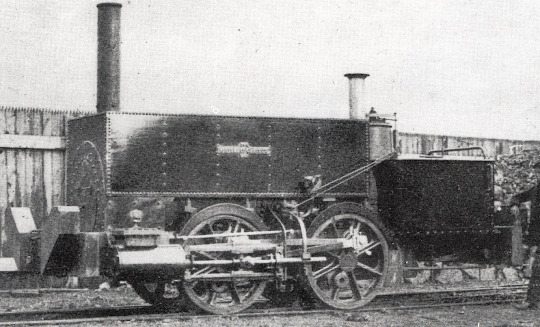
As for the other pre-NWR engines? Well, many of them were scrapped during World War II for their scrap metal, which was needed for the war effort (this was done under Sir Topham Hatt I's nose, and he was pretty furious when he found out, but was unable to do anything.) However, some had more interesting lives:
TK&ER Coffee Pot 3 was sent to Belgium in WWI as a shunter to supply the trenches of the Western Front. He was quite successful in this, and became famous after he helped save a town from a German attack in 1917. For his bravery, he was given the name Lennart and after the war, he was preserved. He is currently at the Musée du chemin de fer à vapeur, Treignes in Belgium.

W&S Manning Wardel 1 worked on Sodor until WWII, when he was sold to the Iraq State Railways and loaded onto a ship bound for the Middle Eastern Nation. Unfortunately, the ship was torpedoed while traversing the Mediterranean Sea and the engine was lost at sea. His sibling, W&S Manning Wardel 2 was shipped to Northern Queensland in 1931 during the Great Depression, having been sold to Queensland Railways. They were converted to 3ft 6in gauge in Cairns, and worked as a shunter around Northern Queensland until the 1950s, when they were converted to a stationary boiler and later scrapped.

Finally, there was W&S Number 4. Number 4 was an LB&SCR E4 class (hence the similarities to the E2 class) and was purchased new in 1898. The engine was quiet, and a hard worker, and worked well on the line until the Viaduct between Maron and Cronk was constructed. They began to act... different, more contemplative than quiet. It's unknown what happened to cause the accident (and subsequent death) of W&S 4 - however, one cold Autumn evening, the engine plunged into the ravine with a passenger train. They were destroyed upon impact.

I know that might be a bit more of an answer than you were expecting, but your question really got me thinking! Thank you again!
#weirdowithaquill#railway series#thomas the tank engine#ao3 stuff#ers ask answered#ask answered#tw engine death#scrap#ask my anything#Wellsworth & suddery railway#Sodor & Mainland Railway
13 notes
·
View notes
Text

Russian officer in a trench, 1914-17
39 notes
·
View notes
Text

10/12/1915-Execution of Austrian spy by Serbian Gendarnes.
#execution#wwi#world war 1#1910s#first world war#eastern front#war history#ww1#world war one#photography#Austria#the great war#1915#serbia#soldiers#Europe#great war#world war#1#wars#Serbian#miltary#spy#tumbler#tumblr#photo#picture#rifle#shoting#history
74 notes
·
View notes
Text

This poem extols the virtues of Princess Patricia's Canadian Light Infantry, a privately raised battalion. In early 1915, it became the first Canadian unit to serve on the Western Front. The Princess Pat's fought with the 27th British Division before joining the Canadian Corps in late 1915.
#Princess Patricia's Canadian Light Infantry#PPCLI#western front#historical photos#world war 1#1917#canadian history#history#german armor#eastern front#artillery#world war 1 stories#ww1#ww1 poetry#ww1 stories#ww1 art#ww1 history#wwi#world war one#The Great War#The First World War
15 notes
·
View notes
Note
How do you think Russia's history would have gone if Nicholas II had listened to Rasputin and not entered WWI?
I don't think that could have happened. The Franco-Russian rapproachment of the early 20th century also meant that France had loaned Russia francs out the wazoo to help bolster and modernize their economy. Avoiding their treaty obligations would likely have resulted in economic chaos as Poincaré called in loans and otherwise ramped up soft pressure for Russia to open up the Eastern Front. Similarly, the Serbs would have seen Russian non-involvement as a betrayal of the Russian promises to act as the protector of Slavs in Eastern Europe.
Thanks for the question, Anon.
SomethingLikeALawyer, Hand of the King
24 notes
·
View notes
Text
WORLD WAR I AND THE WIZARDING WORLD – A MASTERPOST
by @potionboy3, @cursed-herbalist, and myself
A compilation of information and useful links we've utilized for our WW1 verse! This masterpost will include canon material, actual history, and plot points we've come up with ourselves. Non-canon information will be indicated, but please note that it will be considered canon within the WW1 verse!
Will be updated regularly!
Table of Contents:
The Basics
The Wizarding War Effort
Wizarding Politics in the 1910s

1. The Basics:
The Muggle World:
World War I (28 July 1914 – 11 November 1918), often abbreviated as WWI, was one of the deadliest global conflicts in history. It was fought between two coalitions, the Allies and the Central Powers. Fighting took place throughout Europe, the Middle East, Africa, the Pacific, and parts of Asia.
The Allies, or the Entente Powers, were an international military coalition of countries led by France, the United Kingdom, Russia, the United States, Italy, and Japan against the Central Powers or Central Empires of Germany, Austria-Hungary, the Ottoman Empire, and Bulgaria. [X]
Useful links: Interactive global First World War map World War I, an in-depth video World War I oversimplified, part 1 & part 2 Infantry Battallions Explained (this is actually a look into the use of Vickers machine gun in history but the graph was useful)
The Wizarding World:
During the war, British Minister for Magic Archer Evermonde was responsible for passing emergency legislation forbidding wizards and witches from getting involved, in an attempt to prevent mass breaches of the International Statue of Secrecy. This did not prevent thousands of wizards from discreetly aiding Muggles wherever they could. Minister Evermonde's position drew the public condemnation of Wizengamot member Henry Potter, which caused a minor stir at the time. Henry's outspoken pro-Muggle views were one of the chief reasons for the Potter family's exclusion from the Sacred Twenty-Eight. [X]
Useful links (there really is very little in the HP canon about this period): First World War, Harry Potter Wiki Theseus Scamander, Harry Potter Wiki
2. The Wizarding War Effort:
Most witches and wizards were not directly involved with the war, though their lives were certainly affected by it to varying degrees. While the Ministry passed legislation to forbid wizards from participating in the war, it did not neglect it completely. In addition to the witches and wizards who aided muggles illegally, there were several different programs started by the ministry, such as the Owl Air Force*, Intelligence operations by the Auror Department, and Magizoologist operations (Like Newt Scamander and the Ukrainian Iron Bellies at the Eastern Front).
(*The Owl Air Force might have been an illegal operation but we've chosen to make it part of the Ministry. Canon isn't clear on which it was.)
The Auror Department:
This is part of WW1 verse, and not mentioned in canon.
Volunteer aurors were trained to join muggle armies to make sure there was no illegal usage of magic among the ranks. They were also tasked with gathering intelligence, tracking down dark wizards (and other dissenters), and even infiltrating and spying on the Central Powers.
3. Wizarding Politics in the 1910s
People of Note:
British Minister for Magic: Archer Evermonde, in office 1912-1923
Evermonde took office in 1912, after the mysterious passing of his predecessor Venusia Crickerly. Some certainly suspected foul play, but nevertheless Evermonde enjoyed the trust of the population enough that he managed to push through several legislations, including the ban of wizarding involvement in the First World War.
Archer Evermonde, Harry Potter Wiki FC: Gabriel Byrne

Head of The British Auror Department: Willard Hartford (WW1 verse canon)
The Hartofrd family had established itself as a family of aurors a couple of generations ago, so it was only natural for Willard to pursue the career. He became Head Auror in 1911. He is the boss of Ares Gaunt and Lunas Avery, among others.
FC: Jim Sturgess
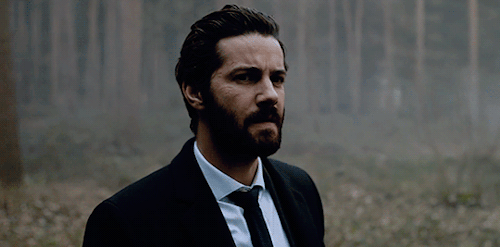
The Supreme Mugwump: Gala De Lange (WW1 verse canon)
Gala served as the Dutch Minister for Magic before becoming the Supreme Mugwump. She is known for her neutrality and insistence upon the non-involvement of wizards in the muggle conlifct.
FC: Famke Janssen

The German Minister for Magic: Waldemar Munter (WW1 verse canon)
lore tbd
FC: Sebastian Koch
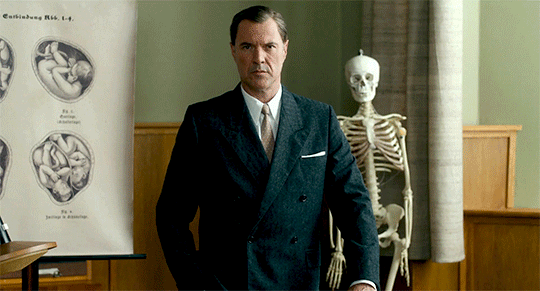
Head of The German Auror Department: Anton Vogel (WW1 verse canon)
During the war Vogel served as the head of the German auror department. He later became the German Minister for Magic and the Supreme Mugwump. He is the father of Alexej Kavinsky. Vogel's motivations are shrouded in mystery and eventually he becomes involved in the plans of the dark wizard Gellert Grindelwald.
FC: Oliver Masucci Harry Potter Wiki Page

The General Political Climate: (WW1 verse canon)
Across Europe, many witches and wizards were not happy with the war and saw that it was the muggles who were to blame for such chaos and violence. There was a rise in blood-purist ideology, as well as isolationism and anti-muggle sentiment.
Minister Evermonde wanted to keep out of the war as much as possible, and this, if anything, was a reflection of many of his other policies too. He did not wish to effect change, instead he was a traditionalist who was comfortable keeping up the status quo. While he was not overtly blood-purist, he did not do anything to speak for muggleborns, squibs, or any of the groups classified as "creatures".
Mistreatment of minorities & Blood-purism:
As we see the Ministry still being a cesspool of bigotry and corruption in Harry's time in the 1990s, it can be safely assumed that things were not better during the beginning of the century. The radical organization TOWER fuelled the vitriol towards muggles and muggleborns, creating a scapegoat for all the frustration and anger.
TOWER
The Transnational Order of Wizards' Exposure Right is an anti-muggle organization dedicated to toppling the British Ministry of Magic but it operates across all of Europe. They use any means necessary to advance their goals and their existance is known only to few. Their power lies within their secrecy.
TOWER Masterpost (link to be added)
24 notes
·
View notes
Photo

WWI skeleton map of South Russia, Turkey, and Persia showing assumed distribution of the enemy’s forces, August 14, 1918.
Record Group 120: Records of the American Expeditionary Forces (World War I)
Series: British Headquarters Maps
Image description: Map showing the area roughly from Latvia to the Persian Gulf. Red lines show German, Ukrainian, and Austro-Hungarian armies on the Eastern Front; green lines show Bulgarian, Azerbaijani, Mesopotamian, Palestinian, Hejaz, Asir, and Yemeni forces in Dobrudja and the Turkish theater.
20 notes
·
View notes